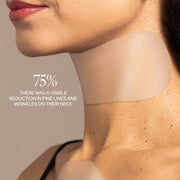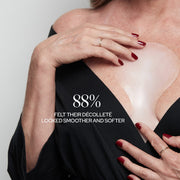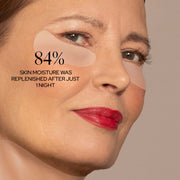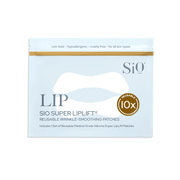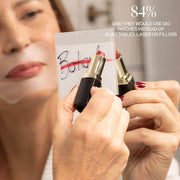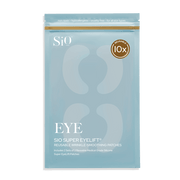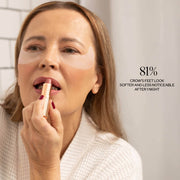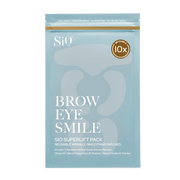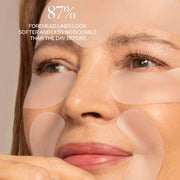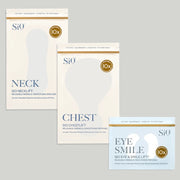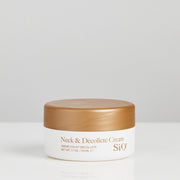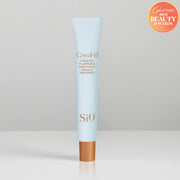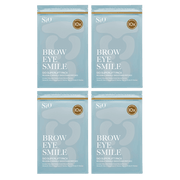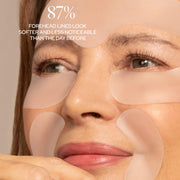Dehydrated Skin: What You Need to Know

Without a doubt, things like acne and an oily T-Zone make the list of skincare dilemmas that can wreak havoc on our daily lives. But there’s another common issue that not only makes the cut, but ranks high on that list, and that’s dehydrated skin. Not to be confused with dry skin (more on that later), dehydrated skin can be the precursor to inflammation, redness, sensitivity, and a less-than-perfect makeup day. It can also increase the signs of aging—aka those teeny tiny lines underneath your eyes—as well as make the skin appear uneven in tone. While dehydrated skin knows no bounds (it can occur on areas other than your face like the neck and chest), the good news is that there are ways to combat it. First things first? Deciphering if what you’re experiencing is actually dehydration or dryness. In the name of flawless skin, we’re demystifying everything you need to know about this all too common skin condition. Keep scrolling to learn how to tell if your skin is dehydrated and, more importantly, how to fix it.
Is My Skin Dry or Dehydrated?
Their symptoms may be the same and they may sound interchangeable, but dry skin and dehydrated skin are vastly different. Like the terms “oily” and “combination,” dryness is a way to describe a skin type and it’s inherited from genetics. It refers to skin that doesn’t produce enough natural oil (aka sebum). This, lack of moisture can make skin appear flaky. Though a dry skin type can’t be changed, it can be improved with the use of oil-based products. Dehydrated skin, on the other hand, is a skin condition (not type) where the skin lacks water. This can be caused by external factors like your diet (not drinking enough water), environmental conditions (such as seasonal changes), and lifestyle choices (like alcohol consumption). These are things that drain your skin’s water content, leaving you it looking dull, lifeless, and anything but plump. The good news? It’s nothing a few tweaks to your diet, lifestyle, and skincare routine can’t fix.

The Science Behind Dehydrated Skin
Skin is the body’s largest organ and offers protection from toxic pollutants, bacteria, and harmful irritants. Of the multiple layers that make up this vital organ, the topmost layer of the skin (aka the stratum corneum) is responsible for locking in hydration. When this layer is weakened (due to over-exfoliation, diet, or sun exposure, for example), it’s unable to slow down water evaporation in the skin and you’ll experience what’s called transepidermal water loss (or TEWL). The result is skin that feels tight, rough, and dull.
Unlike dry skin, dehydrated skin doesn’t have an issue with oil production, which means all skin types can experience it—oily included. Sounds like a paradox, but if you’re experiencing oily skin, it could be because your skin is actually lacking water, and to compensate for this lack of hydration, it produces more oil. This can cause many people to think they have oily skin when, in fact, it could be a sign of dehydration. Bottom line: for skin to be healthy, moisture and hydration levels need to be balanced.
What are the Signs of Dehydrated Skin?
Struggling to figure out if your skin is dehydrated? We’ve broken down four telltale signs below.
Tightness
Skin tightness is one of the leading signs of skin dehydration. If you notice a feeling of tightness despite being oily, or you regularly feel tight after cleansing, you may be dealing with parched skin. You may feel tight in certain areas more than others—for example, on the sides of your nose or along your chin.
Fine lines and wrinkles
If you notice a sudden onset of lines on specific areas of your face (such as above your brows or underneath your eyes), you can chalk it up to dehydration. In skin that’s dehydrated, fine lines and wrinkles are accentuated and appear more defined. That’s because skin that isn’t properly hydrated loses elasticity and over time, this can accelerate aging. However, unlike deep-set wrinkles (think: crow’s feet or laugh lines), these lines and wrinkles can typically be treated with a switch-up of diet and topical hydrators. These deep wrinkles can also be treated by SiO Cryo Fill to reduce the appearance of expression lines with skin-plumping peptides that reduce the appearance of fine lines while providing hydration to volume deficient areas.
Dullness
If your skin appears sunken in, is dull in tone, or you have darkness underneath your eyes, you’re likely dehydrated. Why? Skin that lacks hydration lacks the ability to rapidly turn over skin cells, which means your skin isn’t able to regularly shed its outer layer. This results in an accumulation of dead cells on the surface of the skin, which is why you’ll likely notice a tired, dull complexion instead of a fresh glow.
Use the SiO Cryo Fill treatment to revive and rejuvenate the look of dull skin and give yourself a youthful glow. With this non-invasive alternative to injectables, you will see immediate results and overall improvement with continued use.
Itchiness
If your skin is prone to itchiness after being exposed to environmental factors (like the sun or cold winter air), it could be dehydrated. The loss of hydration makes your skin more sensitive to moisture-zapping elements that come from extreme temperatures, thus leading to an urge to itch.

Tips to Help Hydrate Skin
Ready to tackle your parched skin head on? Keep reading to learn how to fix dehydration.
1. Drink (or eat) water
Dehydrated skin is a signal of an overall lack of water in your body. Suffice to say, one of the best treatments is—you guessed it—upping your water intake. The skin is the last organ to receive the water you ingest, so you’ll need to get plenty of it to reap its skin-glowing benefits. Not the type to chug eight cups of water a day? Consume foods that have a high-water content like watermelon, cucumber, tomatoes, spinach, and apples.
2. Limit sun exposure
While the sun can deliver a healthy dose of vitamin D, what we’re talking about here is over-exposure. Those prone to dehydrated skin should be mindful of time spent under the sun, as it depletes water from the skin and can damage the stratum corneum. To prevent sun-related damage, always wear a broad-spectrum sunscreen of at least 30 on both your face and body. Don’t forget to reapply your protection throughout the day (experts recommend every two hours), even if you’re wearing makeup—try an SPF-infused facial mist if you’re worried about messing up your foundation.
3. Apply a hydrator
Not to be confused with moisturizer, hydrators add water to the skin while moisturizers create a barrier on the surface to keep water from evaporating. That said, applying a hydrator first then following up with a moisturizing lotion is an effective way to prevent your skin from becoming dehydrated. Look for products that have either glycerin, hyaluronic acid, or urea in them—these are all humectants, a type of moisturizing agent that attracts water. Try a hydrating serum like SiO Beauty’s Energy Serum—it's made with humectants like glycerin and powerful antioxidants like Camellia Japonica Flower that douse skin with much-needed skin hydration for a refreshed, line-free complexion.
4. Avoid hot showers
We know you love the cozy feeling of a steaming hot shower, but this can lead to a dehydrated skin feeling. It can also contribute to that tight, uncomfortable feeling you may already be experiencing. Instead, opt for short, lukewarm showers. (PS: this is better for your hair, too.)
Closing
The battle against your dehydrated skin doesn’t have to feel like a perpetual loss. Knowing how it differs from dry skin along with being aware of things that can exacerbate it are good first steps at learning what to do (and what not to do) when it comes to treatment. You may have to put in the work by switching up your skincare products, improving your moisture barrier, and drinking enough water, but by incorporating these tips into your routine, smooth, glowing, radiant skin is right around the corner. And remember, if you're really struggling, a visit to your dermatologist to assess your skin health may be in order.


